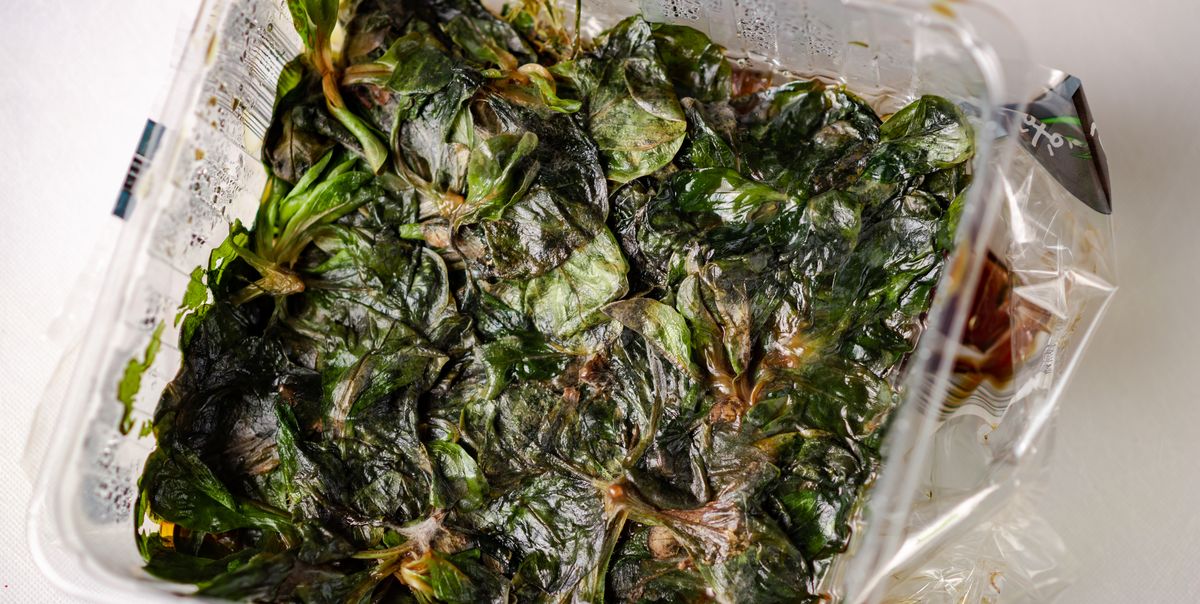Is Slimy Spinach Safe to Eat? Experts Explain

Understanding the Causes of Slimy Spinach
Spinach is a popular leafy green known for its nutritional benefits and versatility in various dishes. However, one common issue that many people encounter is the development of a slimy texture on some of the leaves. This sliminess is typically caused by an excess of moisture, which creates an ideal environment for bacterial growth. As these bacteria multiply, they break down the leaves, leading to a mushy and unappetizing texture.
The presence of slime can be alarming, especially when it appears in a bag of otherwise fresh greens. While it might be tempting to eat the unaffected parts of the spinach, experts advise caution. The slimy areas are often a sign of spoilage, and consuming them could pose health risks.
Is It Safe to Eat Slimy Spinach?
When faced with slimy spinach, the first question that comes to mind is whether it's safe to eat. According to food experts, it’s best to avoid eating the slimy portions entirely. However, if the affected leaves are isolated and not widespread throughout the entire bag, there may still be safe portions remaining.
Celine Beitchman, director of nutrition at the Institute of Culinary Education, suggests that if the slimy parts are separated from the rest of the leaves, it might be possible to salvage the remaining spinach. That said, she emphasizes the importance of erring on the side of caution. In professional kitchens and at home, the mantra "when in doubt, throw it out" is often followed to ensure safety.
Preventing Slimy Spinach
Prevention is key when it comes to keeping spinach fresh and free from sliminess. One of the most effective ways to prevent this issue is through proper storage. Experts recommend storing spinach in the vegetable bin of your refrigerator, where it can remain dry and loosely packed. This helps to minimize moisture buildup, which is a primary contributor to bacterial growth.
In addition to proper storage, using airtight containers with paper towels can help absorb any excess moisture that might accumulate. Bryan Quoc Le, founder and principal food consultant at Mendocino Food Consulting, suggests this method as an effective way to maintain the freshness of your greens.
Another important step in preventing slimy spinach is to avoid washing it too early. Both Beitchman and Quoc Le agree that washing spinach just before use is preferable. This helps to keep the leaves dry and reduces the risk of spoilage.
Proper Washing Techniques
When it's time to wash your spinach, there are a few methods you can use to ensure it's clean and safe to eat. Beitchman recommends filling a bowl or the basin of a salad spinner with cold water and gently swirling the leaves to remove dirt. After allowing the dirt to settle, the leaves can be removed and dried using a salad spinner or paper towels.
Quoc Le takes a slightly different approach, suggesting that spinach should be washed under running water while gently rubbing the leaves to remove any dirt, pesticide residues, and bacteria. This method ensures thorough cleaning without introducing excessive moisture.
The Bottom Line
Slimy spinach is a result of bacterial growth due to excess moisture on the leaves. While the affected areas should be avoided, it may still be possible to enjoy the rest of the spinach if the slime is isolated. To keep your greens fresh and free from sliminess, store them in the vegetable bin of your refrigerator, keep them dry, and use airtight containers with paper towels if needed.
Remember, the key to maintaining the quality of your spinach is to wash it only when you're ready to use it. By following these simple steps, you can enjoy your favorite salads and dishes without the worry of slimy greens.
Post a Comment for "Is Slimy Spinach Safe to Eat? Experts Explain"
Post a Comment